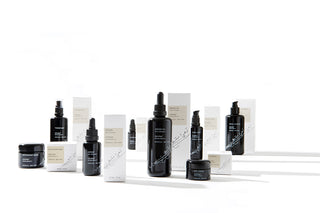When I started down this road ten years ago, it was truly the Wild Wild West in the “Organics” category of cosmetics. Brands using small amounts of natural and/or organic material in formulations consisting mainly of synthetic ingredients were slapping the word “Organics” and “All Natural” in their brand names and on their labels. Lawsuits were being initiated by individuals wanting to protect the meaning of the term “Organic” without a clear standard or definition as it applied to cosmetics.
Being from a farming family (a family vineyard in the Napa Valley), I understood the meaning of the term as it applied to agriculture (no chemical pesticide or herbicide contamination for a minimum of three years). But I wasn’t sure how Organics was best applied to skincare containing plant ingredients as well as water and that can sit on retailers’ shelves for two years. The industry had not yet come to a clear conclusion either. I joined The Organic Monitor's chat group to learn more and watched as the argument became increasingly heated in the effort to agree on a standard. Some of the issues concerned included:
Could soap, a byproduct of the chemical saponifaction process, actually be considered “Organic” though none of the chemical remains in the end result?
Is it in the interest of the consumer to have a small amount of a non-harmful synthetic preservative to protect their products from mold and harmful bacteria?
How should a product's organic percentage be calculated? Should water be excluded from the formula in the calculation?
Amidst the confusion, I knew that my products needed to work without harming the consumer or the environment. We would do our best to use all natural ingredients, organically farmed whenever possible. My goal was not to be the most "Organic". Doing so would exclude the use of many excellent ingredients that are naturally derived but not farmed. Aware of the litigious nature of some of the people in the category I found myself in, and amidst the change to stricter labeling laws, I abandoned the name Argan Organics and decided that I would commit myself to transparency in our labeling of ingredients. To this end, I decided to become certified by a third party.
After some research, I settled on the Ecocert standard. Ecocert looks at each piece of the production chain to ensure environmental sustainability as well as the safety of consumers. I was impressed by its thorough commitment to environmental protection that includes compliance of the packaging components in addition to formulations. I also believe that Ecocert offers the appropriate level of flexibility for formulators to ensure product longevity.
In order to be certified Natural, 95% of the total ingredients must be from natural origin. Of these, 50% must be from plant origin (not water, mineral or animal byproducts). These cannot be extracted with petrochemical solvents, must be sustainably grown and cannot belong to an endangered species. Five percent is required to be organically farmed. GMO ingredients and nanoparticles are not allowed. Animal testing is prohibited.
To be considered organic, 95% of the plant ingredients in the formula must be organic.
The agency takes a close look at each ingredient to validate it as not containing hidden synthetic preservatives while allowing a short list of certain non-harmful preservatives to be used*.
Beyond looking at ingredients, Ecocert reviews the entire chain from the harvesting, extraction and delivery of raw materials, manufacturing methods including sterilization techniques, transportation, storage and the traceability of finished products to consumers. Packaging copy is reviewed for false or misleading claims and actual percentages of natural and/or organic ingredients in formulas are verified. Annual audits are conducted to review each step of the way.
The process is rigorous and expensive and has been challenging for my small brand. It is not something I did with the intention to sell more products, but to assist you to determine the safety of your products and to ensure the environmental stewardship of my brand. Not all natural sounding ingredients are 100% natural while many natural ingredients have confusing names: propanediol, cetearyl alcohol, behenyl alcohol to name just a few. I don't expect consumers to know which are which. Our certification allows consumers to have the confidence to purchase our products without being concerned for their health or any negative impact on the environment.
*Here is the complete list of 9 non-harmful synthetic ingredients allowed by Ecocert, not necessarily used in our formulas:
|
|
| Benzoic acid and its salts |
Preservative |
| Benzylic alcohol |
Preservative |
| Dehydroacetic acid and its salts |
Preservative |
| Salicylic acid and its salts |
Preservative |
| Sorbic acid and its salts |
Preservative |
| Tetrasodium glutamate diacetate |
Chelating agent |
| Tertiary butyl alcohol |
Denaturing agent |
| Isopropyl alcohol |
Denaturing agent |
| Denatonium benzoate |
Denaturing agent |


